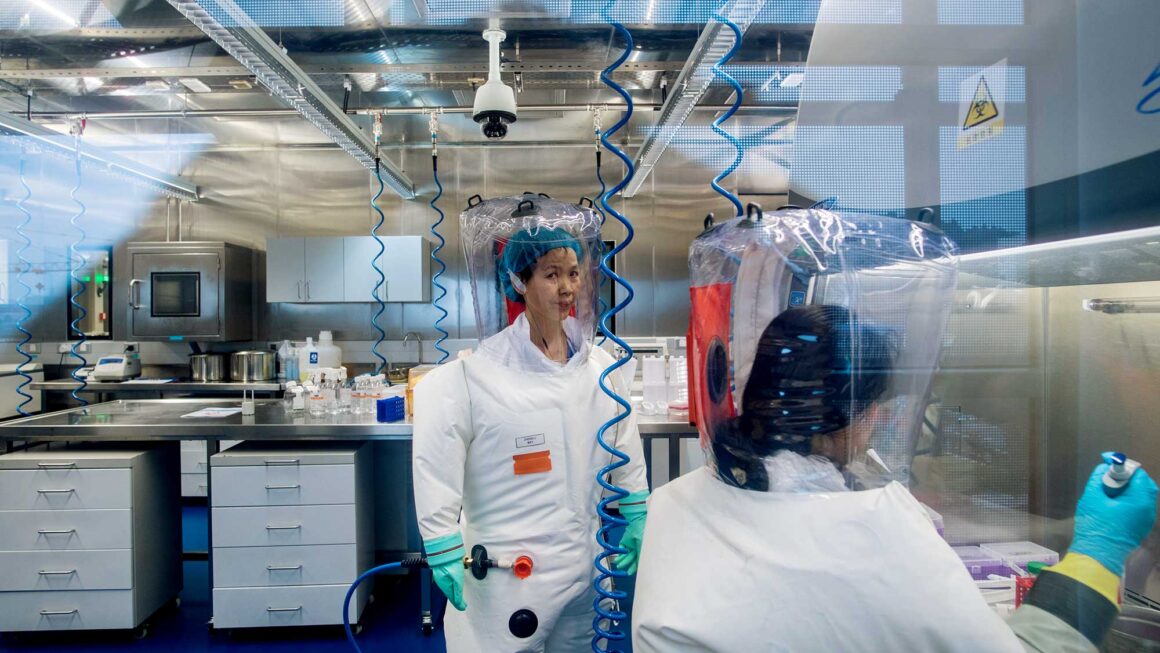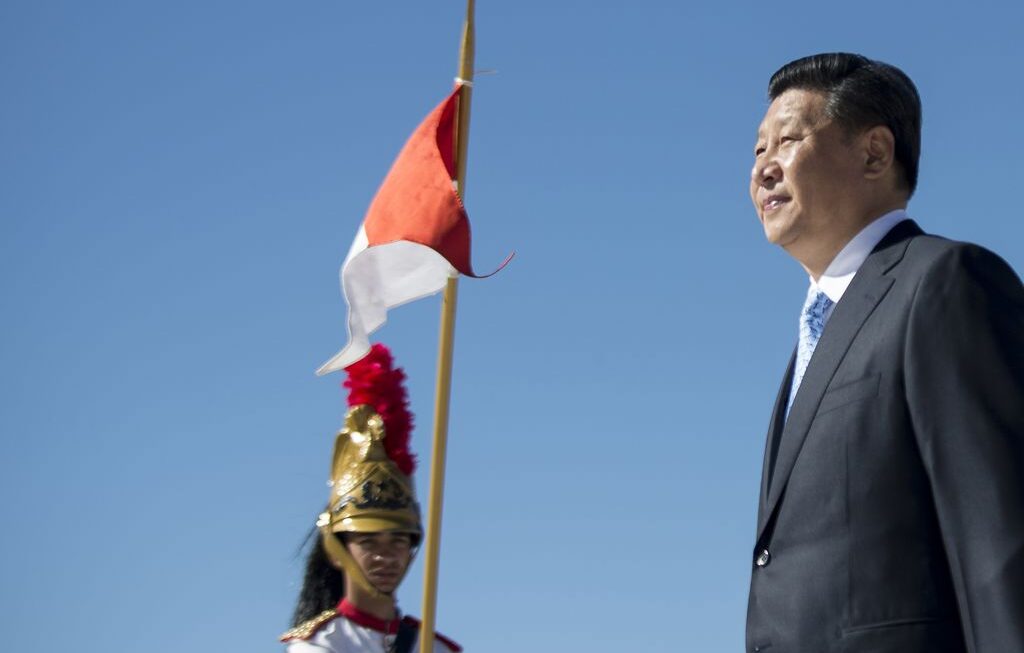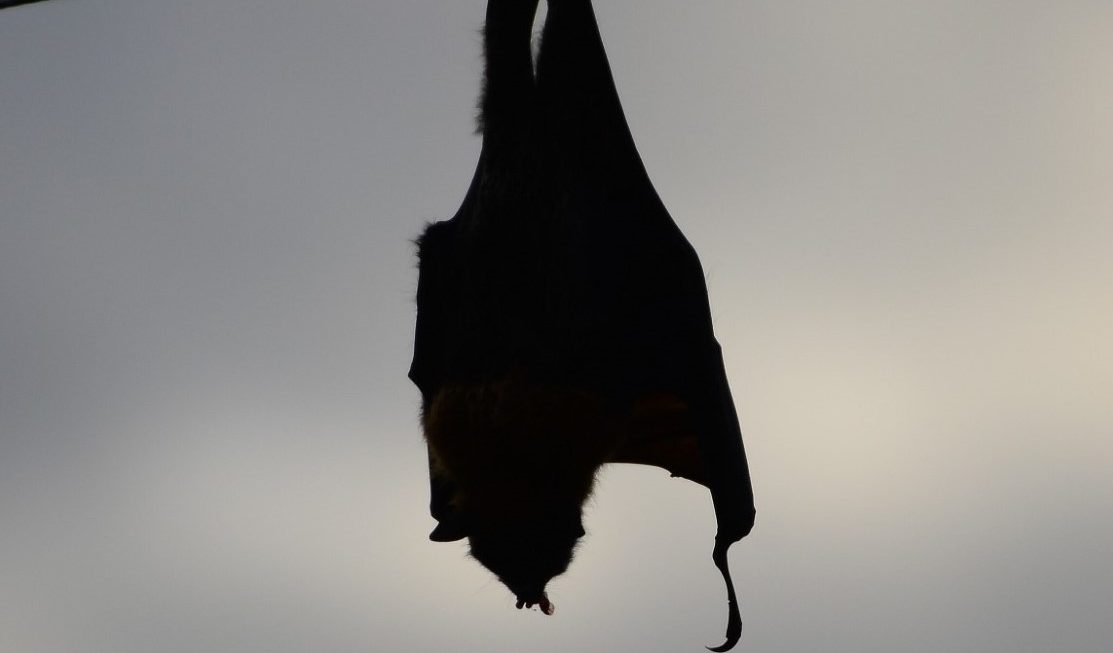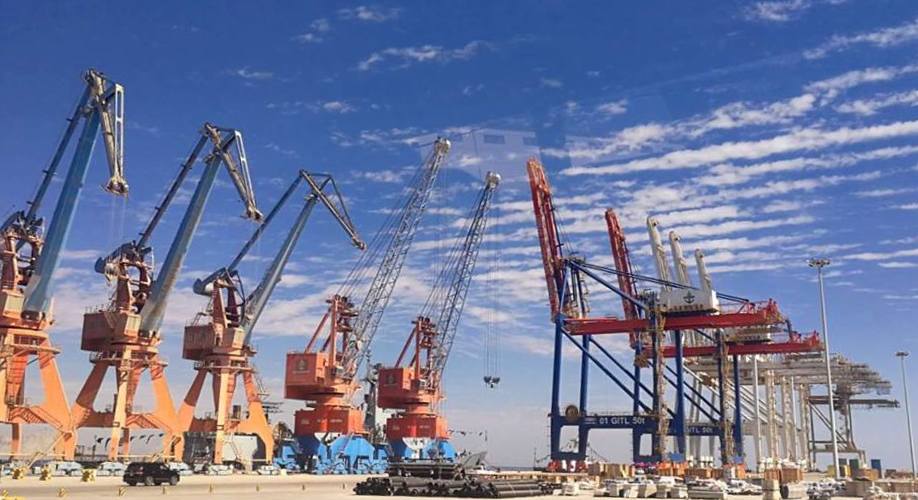Conspiracy theory isn’t what it used to be. The term has taken on a pejorative quality of late, and those who subscribe are increasingly viewed as dangerous lunatics. It was once the case that a person who believed in shadowy government cover-ups was considered eccentric but harmless. Celebrity adherents were smilingly indulged. In 2003 the actor Charlie Sheen was able to sit down with TV host Jimmy Kimmel and a sympathetic-sounding audience to discuss the theory that 9/11 had been an inside job. Meanwhile the rock singer Matt Bellamy would regularly describe himself in interviews (not without a touch of pride) as a dedicated conspiracy theorist.
But our language is changing fast in this age of social justice, and the term, like so much else, has been newly invested with heretical meaning. It has been tainted, and this means it can be weaponised. If an inconvenient idea pokes holes in the carefully-constructed mainstream narrative, then that idea can be shut down with a minimum of effort through the simple attachment of the label ‘conspiracy theory’. Those two momentous words will immediately settle the matter in the reader’s mind: the theory (whatever it is) must have been proven false beyond any possible doubt. Clearly, only extremists believe it. Why waste time looking into it?
“Conspiracy theories ripped through the internet this year,” screamed a recent BBC report, “destroying relationships and endangering lives.” One of these lethal ideas was the suggestion that China’s authorities have been whitewashing the accidental release of SARS-CoV-2 from the Wuhan Institute of Virology (WIV). The lab leak theory has been dismissed as a conspiracy by significant figures in the scientific community, and today it can be found lurking shamefaced near the top of the Wikipedia page for ‘COVID-19 misinformation’. It is treated with a similar lack of seriousness in the recent report from the World Health Organisation (WHO). We might imagine these conclusions to be the happy result of a rigorous investigation. But nothing of the kind has ever taken place. And as it turns out, there are good reasons to suspect that the pandemic upending our lives does indeed have its genesis in the lab at Wuhan.
A belief in the deceit of Communist Party officials is not a condemnation of all those who deny the lab leak theory, whether in China or anywhere else. Most people simply trust the word of their superiors, or perceived superiors, and they see no reason to go digging for the truth themselves. Today we sometimes find that the scientific community fills the social role previously occupied by the priesthood – they are the holders and interpreters of divine truth, not to be questioned or doubted by ordinary people. But while the scientific method may be one of the most valuable tools that society has at its disposal, this does not mean that those who wield the tool have become infallible. They are still human. They can be bought, or they can be blindsided.
And so we turn to the facts. China’s bat coronaviruses are found in caves in the country’s deep south. This means that any coronavirus outbreak would be expected to occur in one of the region’s sprawling subtropical cities, and that is indeed what happened twenty years ago with SARS. But when disaster came to China in 2019, it was more than a thousand miles north, far from any bats, and right next door to the nation’s only top-level virology lab – a lab that happened to be experimenting with chimeric coronaviruses and conducting gain-of-function research on SARS-CoV-1.
Our scientists may sneer, but there is nothing unlikely about the prospect of a virus being accidentally released. Smallpox escaped from British laboratories three times between 1966 and 1978. SARS-CoV-1 has escaped six times in the years since the outbreak of 2002. Four of these leaks occurred at the same place: the Chinese National Institute of Virology in Beijing. We can also find historical precedent for a government covering up a lab leak and getting away with it. When an anthrax outbreak killed citizens of Sverdlovsk in 1979, the Soviet authorities blamed tainted meat. This story was widely accepted. But in 1992 President Yeltsin admitted that the spores had been released from a military research facility close to the city (a result of the same sloppy Soviet negligence that was to cause the Chernobyl disaster seven years later, in 1986). The KGB had confiscated hospital records at the time of the accident, and this successful cover-up allowed the Soviet authorities to continue with their biological warfare program for another decade. Communist parties have fooled the world before.
With all this in mind, it would have made sense for international attention to focus first of all on the WIV. It would also have been in Beijing’s own best interests, if no leak had occurred, to present the world with definitive evidence that the WIV had not been working on (or simply housing) SARS-CoV-2. The accusations would cease; the doubters would be silenced. China’s authorities could have achieved this fairly quickly by flinging open the doors of the Institute and ushering in the international teams. They did nothing of the kind. Instead, examination of the lab was made impossible for more than a year, and the world’s attention was nudged in a variety of other directions, beginning with the Huanan seafood market – where no bats are to be found.
But despite all the roadblocks and the ‘nothing-to-see-here’ handwaving, the lab was the focus of a great deal of activity behind the scenes. On January 1, the Hubei Health Committee ordered genome sequencing organisations to destroy all existing virus samples immediately. On January 2, the Director-General of the WIV sent an email to staff forbidding the disclosure of any information relating to the virus. On January 31, Major General Chen Wei, a bioweapon expert in the People’s Liberation Army (PLA), was suddenly placed in charge of the WIV. On February 14, Beijing announced the imminent introduction of a new biosecurity law. On February 16, state media reported that the nation’s laboratories would be required to “boost their biosafety” from now on, because “lab trash can contain man-made viruses, bacteria, or microbes with a potentially deadly impact on human beings, animals, or plants.” Hasty reassurance was provided in case readers were worried – the timing of this new regulation had “nothing to do” with the new coronavirus. And so the instances of suspicious behaviour simply piled up, one after the other, almost creating the impression of an enormous satire.
The Party has continued in the same manner ever since, leaving a trail positively strewn with red flags. Chinese preprint papers arguing that “the coronavirus probably originated from a laboratory in Wuhan” were retracted, and a stringent new vetting process was applied to all internal research discussing the virus, meaning that nothing could be published without the say-so of the central government. The Australian Prime Minister’s very reasonable call for an independent investigation into the origins of the outbreak was met with fury: Beijing imposed aggressive trade sanctions, and its diplomats compared Australia, absurdly, to Brutus in his betrayal of Caesar.
Beijing was eventually forced to scrap the wet market origin theory due to a complete lack of evidence. This did not put a stop to the diversionary tactics. Perhaps the virus came from a mink farm. Maybe it had been imported on frozen food. Or perhaps it did leak from a lab after all, but one located in the United States, not China. All hypotheses were up for discussion bar one. Nevertheless, as time goes by and no sign appears of a host animal that could have transferred the virus to humans, the forbidden theory is slowly gaining advocates – and perhaps evidence. According to a ‘fact sheet’ released in January by Mike Pompeo, several employees at the Wuhan Institute fell ill in autumn 2019, prior to the outbreak. Their symptoms matched what would later come to be known as COVID-19. (Wuhan virologist Shi Zhengli has claimed there was “zero infection” among WIV staff.) It is noteworthy that the new WHO report agrees about the existence of cases with COVID-like symptoms in October. Pompeo’s sheet further alleged that the WIV had been conducting secret research on behalf of the Chinese military, including laboratory animal experiments.
If there is any truth to these allegations, then inquiries relying on the transparency of the Chinese authorities will be useless. Indeed, there is reason to believe that January’s much-publicised WHO mission was little more than a Potemkin exercise. The Communist Party waited an entire year before it would allow an investigation of any kind, and even then it insisted on veto power over all scientists included on the team. The Party was more than happy, however, with the selection of Peter Daszak, a man fatally compromised by his position as president of EcoHealth Alliance. This is an organisation that specifically funds gain-of-function research involving bat coronaviruses. Over the years it has sent millions of dollars to Wuhan. In fact, Daszak himself co-authors papers with Shi Zhengli.
He has also maintained that the WIV does not house live bats captured in the wild. “That’s not how this science works,” he scoffed on Twitter. But the WIV apparently filed patents back in 2018 for bat cages to be used in the lab. In fact, Shi Zhengli has been quite open about this. She has spoken at public conferences about her experimentation on live bats, and how she monitors them for months in search of antibodies. Now Shi is doubtless a dedicated worker, but it seems unlikely that those long months are spent living in the caves, shivering in the dark as she carries out her daily tests. For all Daszak’s denials, it is rather more likely that the testing takes place back at the lab. Perhaps the staff in Wuhan simply kept the creatures without Daszak’s knowledge. Whatever the truth, he has confidently described the lab leak theory as “pure baloney” – a less-than-encouraging indicator of the level of objectivity he would be bringing to the investigation. If Beijing wanted someone who definitely wasn’t going to snoop around the WIV, they had found their man.
But as team member Dominic Dwyer later explained, the group “wasn’t designed to go and do a forensic examination of lab practice” anyway. Our response to this should be: “Why on earth not?” Does it make sense that a team of experts dispatched to explore the origin of a pandemic would not be designed to examine one of the major remaining hypotheses on that origin? Investigators should have been looking at lab notebooks, bat samples, and viral strains. They should have been poring over the research conducted at the WIV in the months leading up to the outbreak.
As it turned out, much of this potential evidence had been deliberately hidden from view during those critical months. The Wuhan Institute is home to the most important bat coronavirus database in all of China – a database holding 22,000 samples and their genetic sequences. Eight of these sequences are thought to be similar to RaTG13, the closest known relative of SARS-CoV-2, and therefore of particular value. On September 12, 2019, the entire database was suddenly taken offline. Then the same thing happened to a portal of virus databases created by the National Virus Resource Center (and connected to the WIV). These databases remain unavailable.
The WHO investigation was further stymied by the Communist Party’s refusal to release raw personalised data on 174 COVID-19 cases from December 2019. The Party also denied access to blood and water samples associated with infections thought to have occurred before the first on record. These samples would have helped to determine exactly how and when the virus first began to spread, but apparently the Party did not want such information known. We should not skip over that detail about the earliest infections, because this is where we see the threads beginning to connect. Pompeo’s fact sheet claimed that lab workers were falling ill well before December 1, the date originally given to the first recorded case, but he provided no specifics. Might the WIV have removed its work from public view on September 12 because an accident occurred on that date?
The Institute was certainly known for the kind of haphazard laboratory management that might cause a virus to escape. Back in 2018 US embassy officials in China sent cables home reporting on a “shortage of highly trained technicians” at the WIV. This was of particular concern because the Institute was known to be working with newly-discovered viruses, some of which shared a spike protein especially efficient at latching on to human lung cells. As the stakes rose, the security should have tightened accordingly. There was little sign of this. In March of the same year China Daily tweeted a photo from inside the lab showing a worker collecting virus samples from a freezer – a photo that was subsequently removed when mocking netizens pointed out the warped seal on the freezer door.
Of course, Shi Zhengli has always been most insistent that the virus had nothing to do with the WIV. She has advised anyone suggesting otherwise to “shut their stinking mouths.” But the woman has a track record suggesting a complex relationship with the truth. Back in 2012 a group of miners fell ill in a cave in Tongguan, southern China, while Shi’s team was on a sample-hunting mission in the area. She claimed that the subsequent deaths of three of the miners were caused by a fungal infection, and definitely not a coronavirus. As she was well aware, they were suffering from a COVID-like respiratory disease (fever, dry cough, shortness of breath) contracted while clearing bat droppings in the cave. Samples from the deceased would later test positive for a coronavirus. Shi now appears to be attempting to scrub the miners out of existence, referring in subsequent papers to the “abandoned mineshaft” where her team had been searching. All this deception appears designed to obscure the lethality of whatever it was she had found.
There is a good chance that the Institute’s disappearing database contains previously undisclosed viruses. David Relman, professor of microbiology and immunology at Stanford University, has posited two hypothetical ancestor pathogens: “one with the SARS-CoV-2 backbone and spike protein receptor binding domain, and the other with the SARS-CoV-2 polybasic furin cleavage site.” (SARS-CoV-2’s closest cousins lack this vital furin site.) The new coronavirus emerged surprisingly well-adapted to human ACE-2 (the receptor protein allowing access to cells), which is what we might expect if it had been the product of lab tampering.
If these ancestor viruses really do exist, then it seems likely that one of them killed the miners. We know that the Wuhan team made the thousand-kilometre trip to that same cave on four separate occasions between 2012 and 2013, after the miners had died. It is not difficult to imagine scientists clandestinely moving viruses back to Wuhan for research, gradually tweaking and transforming them for years under the watchful gaze of Shi Zhengli. Her team actually published a paper in 2015 discussing the creation of a synthetic virus, and how a new spike protein would help to facilitate cross-species infection. Four years later, on the eve of the outbreak, Peter Daszak bragged on Twitter about the “great progress” they were making “sequencing spike protein genes, ID’ing ones that bind to human cells, using recombinant viruses…”
We can guess that SARS-CoV-2 was still a chimeric work in progress on that pivotal day in autumn 2019 when a technician decided not to bother with the safety protocols. Perhaps this technician had been similarly lax on many previous occasions, but this time fate was against them. This time they carried the virus right out of the lab before driving to the seafood market for dinner, and in the few casual minutes it took them to make that journey, they condemned to death millions of people all over the world.



